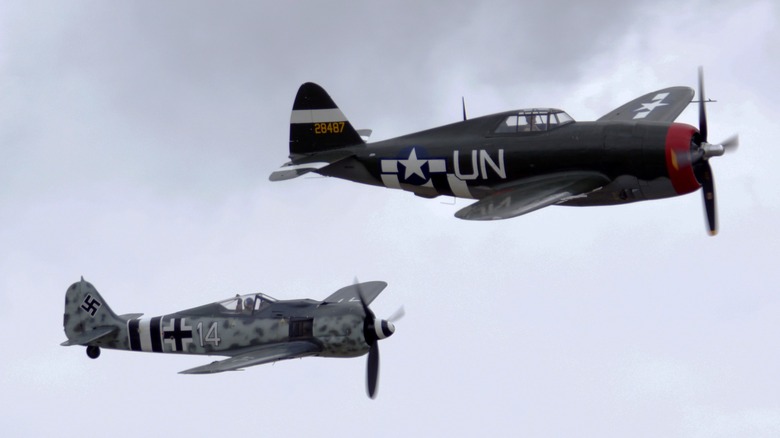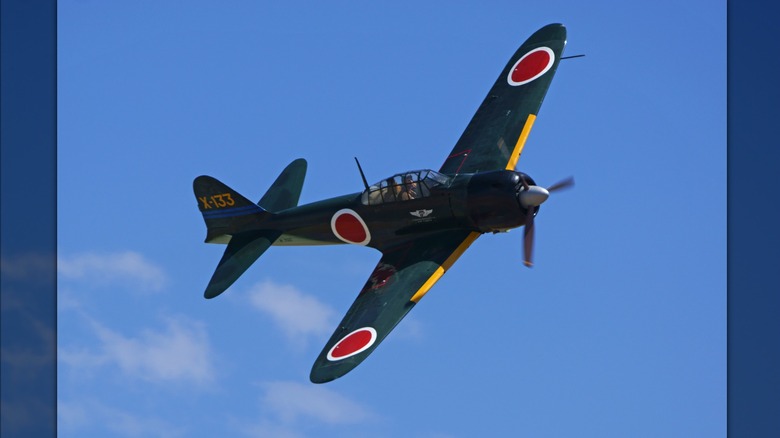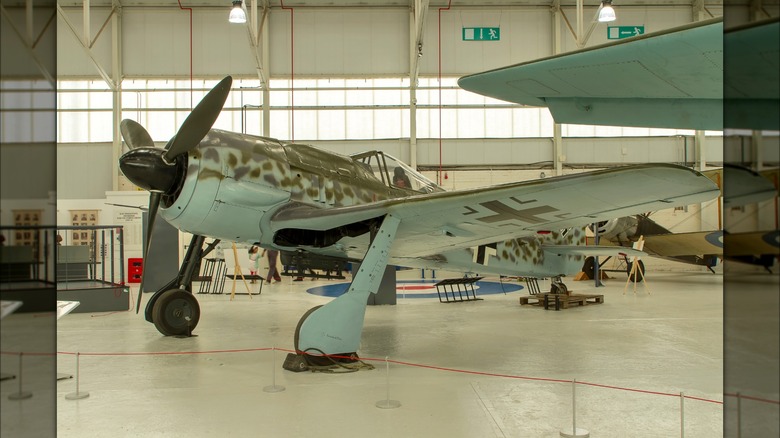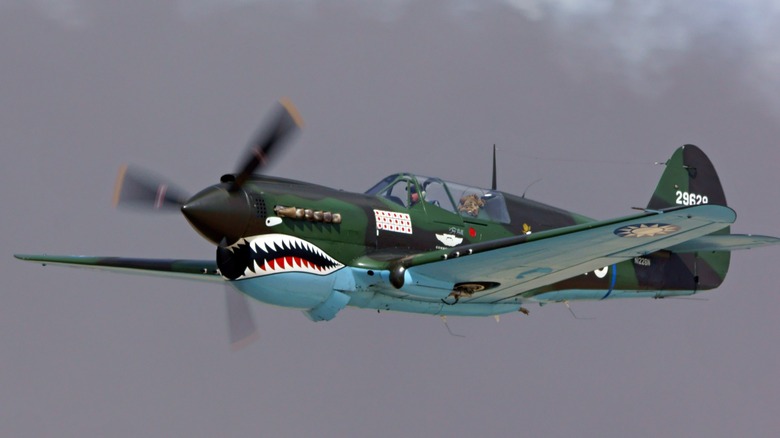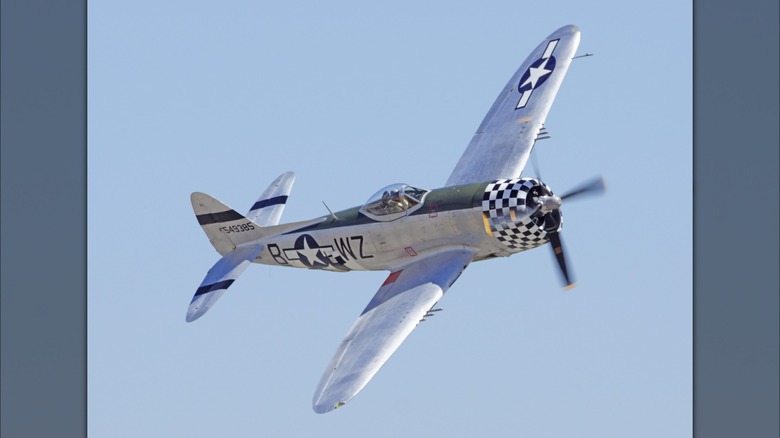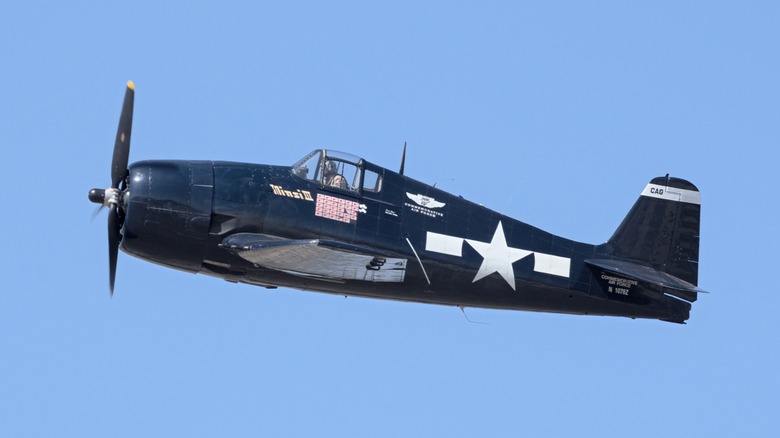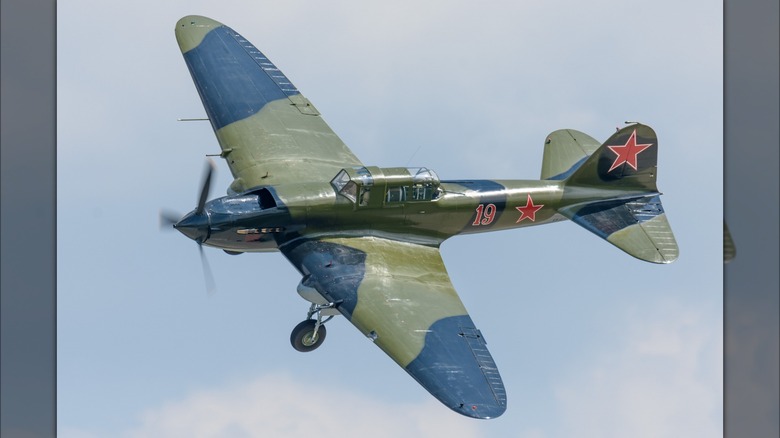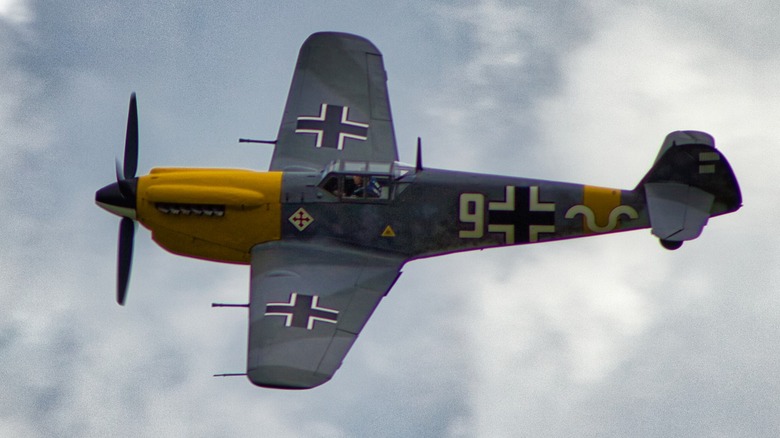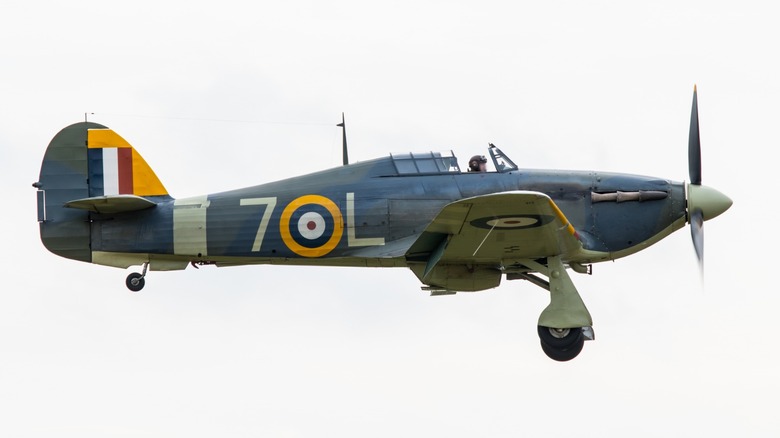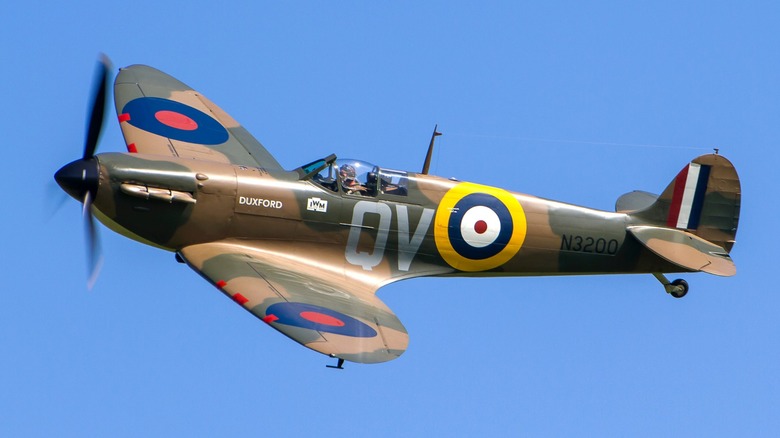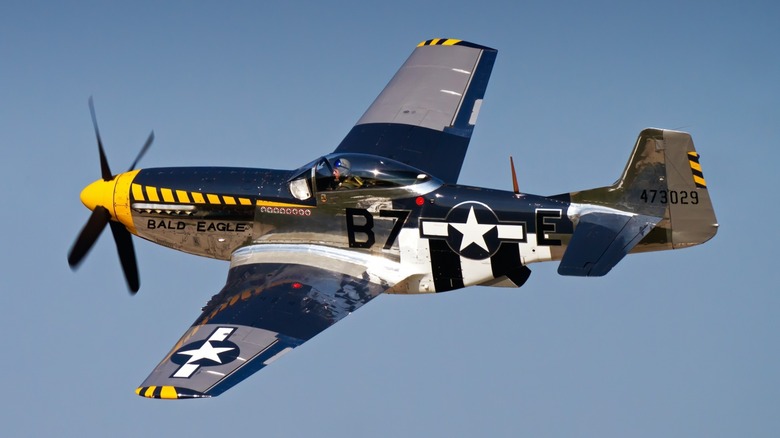Top 10 WWII Fighter Aircraft, Ranked
While the emergence of aircraft as a weapon of war occurred in WWI, creating such novel concepts of the dogfight and the flying ace, the technology of those planes was primitive, and their abilities were limited. But through the years of the interwar period in which political turmoil and upheaval continued to rick the European continent and elsewhere, advancements in aviation for civilian and military use continued at a fever pitch.
As the aviation industry transformed from a fledgling industrial segment to a lynchpin of worldwide transportation and logistics, warplanes became formidable fighting machines. Since the age of jet-powered aviation took over after World War II, the aircraft used throughout that conflict became the pinnacle in propeller-driven fighter aircraft.
The fighter planes used in WWII were incredible machines that pushed the limits of engineers and pilots alike. Furthermore, the sheer number manufactured during that period was an incredible feat. The urgency to produce all manner of materials to boost the strength and capability of forces led to aircraft development happening with break-neck speed such that a plane that might typically take one to two years to develop might be done in less than half of that.
This also brought together some of the most talented individuals, and their efforts resulted in innovative and cutting-edge designs making it to the factory floors. Although the fighter jet soon eclipsed WWII fighter planes, they continue to be impressive machines revered for their capabilities and historical contributions. While dozens of models were engaged in the horrific battles of WWII, here is a look at the top 10, starting with the bottom of the list.
10. Mitsubishi A6M Zero
The Zero was among the aircraft used in the simultaneous Japanese attacks on Pearl Harbor, Guam, Midway Island, and the Philippines in December 1942. In the opening battles in the Pacific, American pilots found their planes highly vulnerable to the Zero. Equipped with a 950-horsepower engine, the lightweight aircraft could reach speeds of 331 mph with a service ceiling of 32,810 feet. It excelled with a fast rate of climb, and its high level of maneuverability made it possible to overcome the American planes in service at the start of the war, leading to devastating losses on the American side.
For much of the first period of the war, the Americans found themselves fighting on the back foot, desperately looking for a way to gain the upper hand. A break came in 1942 when a downed Zero was found on an island in the Pacific and shipped back to the mainland to be studied. Engineers discovered that part of what made it so agile was a lack of armor and protection for the pilot. Furthermore, it lacked the self-sealing fuel tanks that American planes had. It also used an unpressurized carburetor, which could cause the plane to stall in a dive.
Pilots used this information to devise a tactic to bait the Zero, get it to follow them into a dive, and, when the engine would stall, a wingman would go in for the kill, striking the unarmored area of the fuel tank or cockpit. That exploit turned the tides in the Pacific and made the formidable Zero into a fish in a barrel for the remainder of the war.
9. Focke-Wulf Fw190
As Germany set out to conquer its neighbors and spread Nazism to all parts of Europe and beyond, it had several aircraft under development that would aid in its objectives. As its attention turned to France and Britain, the Focke-Wulf Fw190 entered the picture and was first ready for service in 1940. The Fw190 was one of Germany's widely produced planes during the war. It first engaged British aircraft in 1942 and proved to be of particular danger to pilots in early Supermarine Spitfires. These were the only German fighter planes powered by a radial engine, the BMW 801. (All the others were an inline or a V.)
In its base configuration, the turbo and supercharged 801 provided 1,776 horsepower, which pushed its speed up to 426 mph, the top end of the range for planes of the day. The speed, combined with the plane's excellent agility, proved to be too much for British aircraft in the opening stages of the war, which caused many RAF fighters to succumb to the superior fighter. Furthermore, the Fw190 was a versatile aircraft with the ability to serve multiple roles. Not only could it effectively dogfight, but it was also utilized for ground attacks and bombing runs.
With a steady stream of Fw190s coming out of the factories of Germany — more than 13,000 were made — British and American generals put out calls to increase the abilities of their own planes. Eventually, later editions of the Spitfire and P-51 Mustangs caught up to and exceeded the performance of the Fw190, turning the tables on the Luftwaffe. As shortages of fuel and materials began to mount behind German lines, the industrial capacity waned, leaving the Fw190 vulnerable to improved Allied aircraft. By the time a more capable model was ready, little fuel was left to fly them. Allied forces marched ever closer to Berlin, and the new planes never saw combat.
8. Curtiss P-40
Based on where it was deployed and by whom, the Curtiss P-40 could have been known as the Warhawk, Tomahawk, or Kittyhawk. It is one of the lesser known of the Allied planes, even though 13,737 were built, but it is in no way a lesser plane. The design of this aircraft originated in the 1930s when Curtiss received an order from the U.S. Army for more than 200 planes. The Curtiss P-36 was developed from this contract but was found to be too slow, so its designer went back to the drawing board and tweaked the design. The P-36 eventually became the P-40, which found its heaviest usage in the campaigns in Burma, China, and India.
The P-40 became the third most-produced fighter plane during the war. It was a bit slower and less maneuverable than many of its adversaries, but the plane gained a reputation for ruggedness, often outsurviving its adversaries through its sheer toughness. Part of the reason for its limitations when measured against other aircraft in service at the time is that its airframe design dates back to the mid-'30s.
Other fighters had been rushed through the design process and benefited from advances in engineering and the overwhelming focus on making better machines than the Axis powers. Despite its limitations, the P-40 and its courageous pilots performed valiantly in the air. Early in the conflict, the American Volunteer Group in China managed to down nearly 300 Japanese aircraft while losing only 12 aircraft.
7. Republic P-47 Thunderbolt
Although the Republic P-47 Thunderbolt was the heaviest single-engine fighter plane used in WWII, it remained a versatile and highly capable aircraft used for a variety of roles. The design of the aircraft has its roots in the early '30s with aviation pioneer Alexander P. de Seversky, who had left Russia to escape the turmoil of its revolution and went on to be an integral part of American air defense production. An early fighter design he created went through many trials and upgrades throughout the '30s until he arrived at what would become the P-47. The first of the aircraft ready for deployment came in 1942.
Equipped with one of the best engines to come out of this period, the Pratt and Whitney R-2800 Double Wasp radial engine, the P-47 had 2,000 horsepower at its disposal, and a turbocharger allowed for high-altitude flying. Armament included eight .50 caliber cannons ready to tear apart the wings or fuselage of any enemy aircraft within its targets. Its top speed was 426 mph; it was often considered the best ground attack aircraft in the American fleet.
Furthermore, its airframe was incredibly robust, allowing pilots to take significant damage and arrive at the airfields safely. These capabilities made it work well as a dive bomber and a dogfighter, and perhaps those reasons are why more P-47 planes were built than any other American fighter plane throughout the war: 15,683. While a third of them were lost, they were still responsible for shooting down 7,000 enemy aircraft as well as destroying 86,000 railway cars, 9,000 locomotives, 6,000 armored vehicles, and an astonishing 68,000 trucks.
6. Grumman F6F Hellcat
Determining the best aircraft of WWII was not an easy task due to the vast arsenal of fighter planes built in that period. Furthermore, rankings can differ based on the criteria. And that is why the Grumman F6F Hellcat could be ranked among the top. However, it did enter late in the war, making its service time much shorter than others. But this should not diminish its capability and contributions anyway.
The Hellcat design and assembly got underway in 1940 before the U.S. entered the war, but after it had begun. Much of the ideas that went into its design had been formed from information gleaned from pilots who fought in the Battle of Britain, an engagement that set the stage for the rest of the Allies' struggle in Europe. The first Hellcats were flying by 1942 and put into service late in 1943. As carrier-based aircraft, they were superior to the Grumman F4F Wildcats that saw heavy losses against the Japanese Zeroes. But the Hellcat's Pratt and Whitney Double Wasp 18-cylinder turbocharged radial engine's 2,000 horsepower paired with six .50 caliber cannons made it a good platform for establishing air superiority.
Total production of the Hellcat came up to 12,275 aircraft, with 11,000 being built over just two years. While American pilots initially feared engaging the Japanese Zero for fear of being outmatched by a more capable aircraft, the introduction of the Hellcat switched the balance of power to the American side. During the Battle of Leyte Gulf, Capt. David McCambell shot down 15 Japanese aircraft before returning to the carrier, only to find the fuel tanks were empty and all six guns had jammed.
5. Ilyushin Il-2
While American and British aircraft receive vast amounts of praise for their role in defeating the Nazis, the Soviets played a not insignificant role in that defeat as well. While their industrial capacity often trailed the West, the Soviet economy did not fare as poorly as those in market economies throughout the Depression, leaving the Russian industrial base robust by the time of WWII. It also had a mature aviation industry with several airframes that performed well throughout WWII, including the Ilyushin Il-2.
This aircraft was the primary fighter plane in the Soviet Air Force and was instrumental in beating back the Germans. When Stalin ordered the creation of a new plane, he envisioned something of a "flying tank." This was to have a robust airframe and could swoop in and take out ground forces quickly. To that end, it was built with a combination of performance, firepower, and armor protection.
It featured a 1,770 horsepower V12 engine and only had a top speed of 258 mph, which was far less than other Allied planes. It was also armed with smaller weapons up front but did have a rear gunner added to ward off attacks from the rear. Despite being slower and having less capable armaments, the Il-2 prevailed in many situations, owing largely to its excellent armor and the production of 36,000 of them to overwhelm the enemy. It is still the most produced fighter plane ever made.
4. Messerschmitt Bf109
After the fall of France, Germany commenced the Battle of Britain to try to overtake the island nation to further spread its quest for European domination. The air war was an integral part of this plan, and British fighters were immediately pitted against the Luftwaffe in an existential battle for survival. Among the aircraft sent over the English Channel were Messerschmitt Bf109 fighter planes, which proved challenging for the Royal Air Force fleet. Furthermore, the Bf109 continued to be a major part of the Luftwaffe until the surrender of Germany in 1945.
The Bf109 first flew in 1936, well ahead of any war plans coming to fruition. But starting in 1939 with the invasion of Poland, it was an integral part of air support offered to German ground forces. More importantly, it was a genuine threat to Britain during the Battle of Britain and the Allies at large through the rest of the war. As its primary fighter plane, the Bf109 was widely used by the Luftwaffe and to great and devastating effect.
While early models featured a 675-horsepower Junkers engine pushing it up to 250 mph, later versions used a 1,850-horsepower inverted Mercedes-Benz V12 that raised speed to 426 mph. The high power and speed of this plane spurred Allied engineers to quickly find something to counter it and figure out how to defeat it. Fortunately, American industry heeded the call for better planes. By the time Supermarine Spitfires and P-51 Mustangs were found in large numbers in the skies over France, the Bf109's days were numbered.
3. Hawker Hurricane
At the opening of the Battle of Britain, the Royal Air Force had a total of 620 Supermarine Spitfire and Hawker Hurricane fighters at the ready. While these planes may not have been the absolute best technology of the day on offer, it is what they had. Considering the Luftwaffe fleet of about 3,500 Messerschmidt Bf109s accompanying Bf110 bombers were dispatched for air raids over the southern part of the island, the odds were not in their favor. Yet, Britain remained free, and the daring pilots of the RAF prevailed thanks to skilled piloting and their durable machines.
The Hurricane was equipped with the legendary Rolls-Royce Merlin engine, initially making 1,030 horsepower in the Mk I planes and increasing to 1,300 in Mk II models. The Mk II had a maximum speed of 327 mph with a flight ceiling of 35,000 feet. While it was a capable fighter — it had been the first plane to exceed 300 mph — the Bf109s had an additional 550 horsepower and 100 mph of maximum speed. Clearly, it could outperform the Hurricane on paper.
Yet, the RAF did not falter and let the enemy gain the upper hand. By 1943, the power of the Hurricane was up to 1,850, raising its speed and ceiling. Technical improvements continued to be made to the aircraft while innovation was stifled as the Germans were forced into survival mode and cut off from supplies on all sides. Furthermore, the skill and cunning of RAF pilots made them a force to be reckoned with.
2. Supermarine Spitfire
Perhaps the most celebrated aircraft of WWII in Britain is the Supermarine Spitfire. Not only did it hold back an invasion during the Battle of Britain along with the Hawker Hurricane, but it continued to be developed, increasing its potential to bring down a tyrannical regime forever. Developed in the '30s and first flying in 1937, the Spitfire boasted an elegant and sophisticated design.
It was also very modern for its time, with semi-elliptical wings each of which had four guns, and a monocoque construction in which the all-metal skin was the frame and not stretched over one. The Mk I planes benefitted from a collaboration with Rolls-Royce, from which the legendary Merlin engine came, and tweaks and changes started the minute the first planes went into service.
The Spitfire was a highly maneuverable aircraft, and the additional cannons gave it fearsome firepower. Although it performed exceedingly well during the Battle of Britain, the Hurricane claimed more planes shot down. But, as the war dragged on, the Supermarine received many upgrades. By the end of the war, it received the Rolls-Royce Griffon engine with more than 2,000 horsepower, which pushed the speed up to a maximum of 443 mph and with an incredible rate of climb. When the Germans introduced the jet-powered Me262, it was a Spitfire that first shot one down, sealing its fate as one of the era's best fighters.
1. North American P-51 Mustang
When asked what was the best fighter plane of WWII, most would agree it was the North American P-51 Mustang. Surprisingly, this aircraft had been overlooked for some time by American forces and did not go into service with the United States armed forces until 1943. However, it was originally developed for the British as they had already been under siege and needed to bolster their fleets to fend off attacking Germans. To that end, military planners asked an American aviation company for help. Knowing how desperate the situation was, engineers and designers got together and had a flying prototype ready in just 117 days.
While the first version of the Mustang came with an American Allison engine, performance was lackluster. Only once the British had some airframes in their possession did they install the Merlin engine and find the right recipe for a fighter that could finally outclass the Luftwaffe. This engine was such an excellent powerplant that the American car company Packard licensed the design and immediately began churning them out for domestic aircraft production.
This became overwhelmingly evident when Mustangs arrived in France en masse and started giving the Luftwaffe a real run for their money. The success of the planes has led to them being among the most celebrated of all aircraft from the period. Today, a select number of Mustangs are kept in flying condition, meticulously maintained by their owners who, in many ways, owe their freedom to the service of this one aircraft.
